Ancient history requires interdisciplinary explanation
Author : Liu Guangsheng Source : Chinese Social Sciences Today 2014-12-12
The path to rejuvenation for ancient history studies requires theoretical support from various disciplines including folkloristics, cultural anthropology and sociology. Scholars are divided in their views of ancient Chinese texts by various schools of thought, including the Doubting Antiquity, Believing in Antiquity, Proving Antiquity and Explaining Antiquity schools.
The division is an extended version of the 1935 theory of “believing in, doubting and explaining ancient history” put forward by famous Chinese philosopher Feng Youlan (1895-1990).
According to Feng, the school of thought trusting ancient texts maintains that what is said on ancient books is absolutely true; the Doubting Antiquity School is quite the opposite, taking a skeptical attitude towards all ancient sources; and the school trying to interpret ancient historical texts is in between, neither fully convinced by nor completely doubtful about ancient history.
Emergence of belief in antiquity
In 1923, Chinese historian Gu Jiegang (1893-1980) famously claimed that “ancient Chinese history is piled up,” slamming the system of ancient history concerning the Three Emperors and Five Sovereigns.
To refute his view, scholars including Liu Shanli, Hu Jinren and Liu Yizheng successively wrote countering the Doubting Antiquity School.
In fact, before the Doubting Antiquity School emerged, there was no such Believing in Antiquity School. The Believing in Antiquity School came into being as a result of being stimulated by the Doubting Antiquity School that attempted to overthrow the system of ancient history and traditional values.
Gu thoroughly separated Confucianism from ancient history studies, regarding ancient books neither as sacred moral codes nor teaching materials to educate modern people. He conducted scientific research on ancient history drawing upon theories and methodologies of modern empiricism to reveal that ancient history and books are unreliable.
To Feng’s understanding, ancient history believers have blind faith in the “face value” of historical materials and take Confucian classics as trustworthy historical accounts.
Bending the knee in worship at Confucian documents, the Believing in Antiquity School maintains that personal research and writings aim at proving the views of sages in classics are credible. Feng claimed ancient history within the school was more about life value than academic research.
Suspicion destroyed history
Based on ancient records, Gu conducted a systematic investigation into the generation of the imperial system in remote ages. As a result, he found ancient history was “piled up” by post-Confucians with its order upside down.
He stressed that the Debates on Ancient History, his well-known seven-volume work published in 1926, aimed to expose “fake history” and strictly scrutinize groundless ancient texts. For example, if you want to prove the existence of Yu the Great, founder of the Xia Dynasty (2070-1600 BC), you have to present evidence of the era of which Yu lived.
Chinese historian Zhang Xincheng was supportive of Gu. He insisted that if some part of history in a book is fake, the whole book is fake. For such, he expanded the range of fake books to an unprecedented degree, declaring more than 1,000 ancient books “fake” and thus causing a huge gap of materials for ancient history research.
Indeed, subversion is what the Doubting Antiquity School was good at. “We would rather lose history by doubting it than by believing in it,” said Hu Shih (1891-1962), a renowned Chinese philosopher who initiated the Doubting Antiquity School.
In fact, during the Tang (618-907) and Song (960-1279) dynasties, doubting antiquity was prevalent. The pile-up theory was like a “heavy bomb” that blew the ancient Chinese history and traditional values systems to pieces.
Rebuilding history by proving it
Due to excessive suspicion, the Doubting Antiquity School wronged a host of authentic historical texts. As most ancient books were deemed “fake,” there were few materials left for ancient history studies.
After the collapse of the system of ancient history, traditional Chinese history and values had nothing to rely on. Therefore, responding to questions raised by the Doubting Antiquity School, rebuilding ancient history and proving historical texts became the main tasks of academia in the 20th century.
Given that Gu was skeptical of the royal lineages of the Xia, Shang (1350-1046 BC) and Zhou (1046-256 BC) dynasties, reputed Chinese scholar Wang Guowei (1877-1927) grounded himself on oracle bones discovered at an excavation of the Shang capital in Anyang, Henan Province, and proved the authenticity of the kings of the Shang Dynasty listed by Sima Qian (145-86 BC) in The Records of the Grand Historian.
Not merely resorting to unearthed documents to fight vigorously against the doubting antiquity school, he also methodologically incorporated excavated literature into research of ancient texts to promote the rebuilding of ancient history using new materials and methods.
By probing excavated texts, scholars drew the fundamental and most important conclusion that ancient books are not all “fake” and the ancient history system is basically credible.
Explanation of antiquity upheld
Despite Wang’s outstanding contribution to attesting to ancient sources, his double-evidence method concerned with mutual verification of unearthed literature and ancient accounts emphasized pure belief without any doubt. “We should believe in ancient books that can be verified by unearthed literature, but we should not negate those that cannot be proved,” Wang said.
Obviously, his method can only be adopted to prove ancient texts and not to discredit them. His inclination of trusting antiquity goes against the explanation of history advocated by Feng.
This study calls for both believing in and doubting of ancient sources in explanation. The double evidence method pursues the commonness between excavated documents and ancient texts, but turns a blind eye to differences between them.
This can be attributed to the prevalence of the Doubting Antiquity School in Wang’s age, so he focused on finding what is in common between the two to confirm the reliability of ancient texts and books.
It is suggested that the double-evidence method be extended to the comparative method and attention be paid to both similarities and differences to make fuller use of excavated materials.
Explanation of antiquity entails good commands of both historical documents and various methodologies. The double-evidence method is flawed by nature, as unearthed texts are fragmented and unsystematic, so that few can be used to testify handed-down ancient materials.
The multiple evidence method was therefore invented to integrate excavated documents and archeological objects into ethnic and folkloristic historical materials to enlarge the scope of provable ancient history.
The pile-up theory and the double-evidence method are two indigenous theories related to ancient history in China in the 20th century. The two are actually complementary; the pile-up theory can be used to study the change of ancient accounts and thoughts, while the double-evidence method can be employed to find the truth about ancient texts.
Moreover, theories of different disciplines can be drawn upon to facilitate the research of ancient history.
The author is from the Unearthed Research and Protection Center at Tsinghua University.
The Chinese version appeared in Chinese Social Sciences Today, No. 675, December 3, 2014.
The Chinese link: http://sscp.cssn.cn/xkpd/lsx_20155/201412/t20141203_1426484.html
Translated by Chen Mirong
Revised by Tom Fearon
Ye Shengtao made Chinese fairy tales from a wilderness
Ye Shengtao (1894–1988) created the first collection of fairy tales in the history of Chinese children’s literature...
-
How northern ethnicities integrated into Chinese nation
2023-09-18
-
Mogao caves
2023-09-12
-
Mogao Grottoes as ‘a place of pilgrimage’
2023-09-12
-
Time-honored architectural traditions in China
2023-08-29
-
Disentangling the civilizational evolution of China
2023-08-28
-
AI ethics in science fiction
2023-08-23




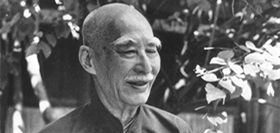
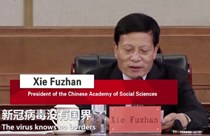
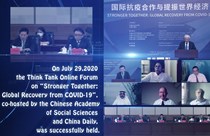
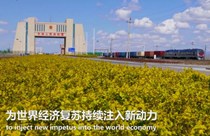
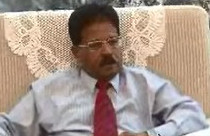
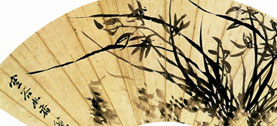

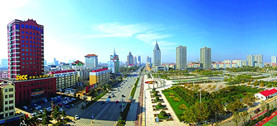


 2011-2013 by www.cssn.cn. All Rights Reserved
2011-2013 by www.cssn.cn. All Rights Reserved